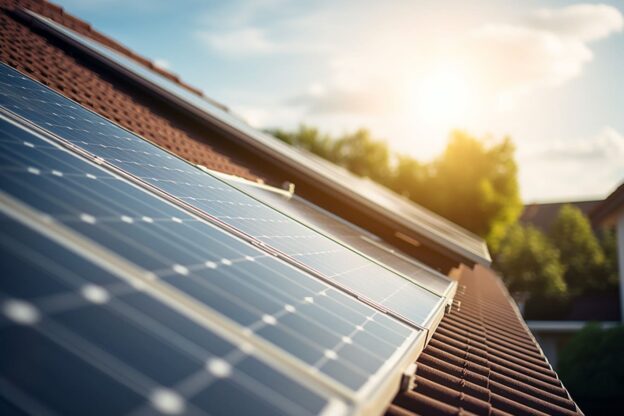Solar panel efficiency measures how much of the sun’s energy striking a panel gets converted into usable electricity. It represents the ratio of sunlight that’s absorbed and turned into power. High efficiency solar panels ultimately take up less space and generate more energy over their lifetime. But what exactly does solar panel efficiency mean and what rates can you expect?
Defining Solar Panel Efficiency
Solar panel efficiency refers to the percentage of sunlight energy hitting the panels that gets converted into electrical energy. For example, a solar panel with a 15% efficiency rating converts 15% of the solar energy that strikes it into usable electricity.
It’s determined by the solar cell material and technology that makes up the photovoltaic (PV) panels. Higher efficiency means more power output.
Factors Affecting Efficiency
The main factors impacting solar panel efficiency include:
- Solar cell material – Monocrystalline silicon cells tend to be most efficient.
- Cell technology – Advancements like PERC improve light conversion.
- Panel temperature – Conversion drops slightly as panels get warmer.
- Low light conditions – Efficiency declines in cloudy or shaded conditions.
- Angle to the sun – Direct exposure is optimal, efficiency decreases at angles.
- Age and wear – Gradual degradation over decades of operation.
Typical Efficiency Ranges
Solar panel efficiency can vary widely by product type:
- Monocrystalline – 19-22% typically
- Polycrystalline – 16-18% range
- Thin-film (CdTe) – 11-13% approx
- Thin-film (CIGS) – 13-15% approx
- Amorphous thin-film – 6-8% approx
Newer technologies continue pushing these ranges higher through improved materials and designs.
Comparing Efficiency Gains
Going with the most efficient panels has diminishing returns and may cost substantially more. Some approximate power gains:
- Upgrading from 14% to 18% yields ~28% more power
- Upgrading from 18% to 22% yields ~22% more power
- Upgrading from 22% to 26% yields ~18% more power
While higher is generally better, balance efficiency with overall value. An oversized array of lower efficiency can sometimes cost less than a premium system.
Benefits of High Efficiency Panels
The main perks of higher solar panel efficiency include:
- More power – Greater energy output from the same surface area.
- Smaller system size – To achieve a target power output, you need fewer panels.
- Aesthetics – A smaller array is more visually appealing for some.
- Space savings – High efficiency works well when roof or land area is limited.
- Cost savings – The tradeoff of efficiency vs. system size affects overall costs.
Real-World Efficiency Examples
- SunPower’s X-Series panels reach over 22% efficiency.
- REC’s Alpha Series achieves up to 21% efficiency ratings.
- LG’s NeON R panels boast over 20% efficiency.
Key Takeaways on Solar Panel Efficiency
Solar panel efficiency continues to gradually increase through advances in materials and solar cell technologies. While higher efficiency panels produce more power per square foot, balance potential efficiency gains against overall system size and costs. Aim for maximizing value, not just chasing the highest efficiency rating.
